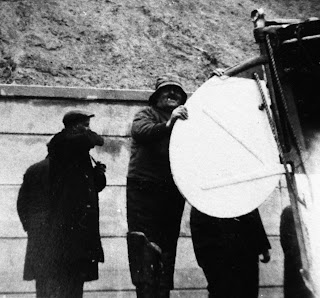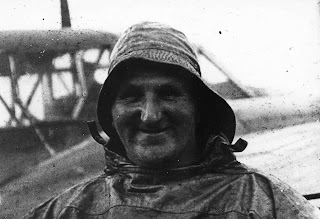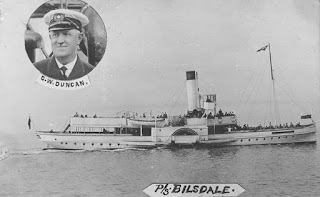Jimmy Dumble was coxswain of the RNLI lifeboat at Sheringham for 22 years, from 1924 to the end of 1946. He was one of the few coxswains who commanded both a pulling and sailing lifeboat (J.C.Madge) and a motor lifeboat (Foresters Centenary).
 |
| James "Jimmy" Dumble |
He was the first coxswain I served under after returning from the Navy, although he was aware of my wish to join his crew before I was called up in 1942. I learnt a lot from him during the short time in 1946 before he retired.
Jimmy was always cheerful and didn’t seem to have any fear of what the sea could do, or the enemy during the war. So it would have to be extremely rough for him to consider putting on a lifejacket when out in the lifeboat.
Early in the war, Sheringham Lifeboat gained a reputation as the “airmen’s lifeboat”. As a result there were exchange visits in 1940 with the “Kipper Patrol” [206 Squadron at RAF Bircham Newton]. The Sheringham lifeboatmen’s visit was noted in the national press as some light relief at that dark time.
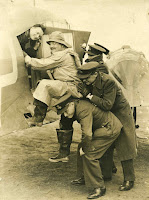 |
| Jimmy & an Avro Anson |
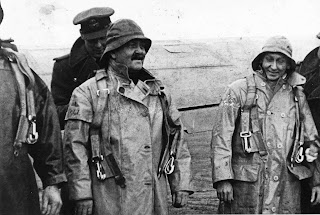 |
| Jimmy Dumble & Jimmy "Chibbles" Bishop |
The lifeboat rescues of airmen by Jimmy as coxswain of "Foresters Centenary" in World War II are well known.
Less has been mentioned that Jimmy is said to hold the record of saving more American airman than anyone else. In July 1943, a Flying Fortress came down about a mile out while the Sheringham fishermen were on the beach preparing for the next day. Jimmy and others launched the large ‘hoveller’ crab boat “Edna” immediately and picked up the whole American crew of 10. Five were in a rubber dinghy and 5 in the water, the plane having sunk in 2 minutes. The "Foresters Centenary" arrived soon after to take over, but this was Jimmy’s ‘ shore-boat’ rescue.
Jimmy’s most difficult lifeboat service was the rescue of 15 from the Canadian steamer "Eaglescliffe Hall" in October 1941.
 |
| "Eaglescliffe Hall" |
It was a low water launch and was made more difficult as there were fewer fishermen around and no launching tractor at Sheringham. Also, the sea was very rough
The sea conditions can be seen in this photo of their return with the survivors on board.
 |
|
Foresters Centenary returns from "Eaglescliffe Hall"
|
The most memorable lifeboat call just after the war was to the 200 ton paddle steamer SS "Bilsdale" which came ashore at Cley in October 1946, but the master declined any help for a long time.
It wasn’t until December that the authorities stepped in and ordered a tug from Great Yarmouth. It took a lot of effort to refloat her and the master requested lifeboat escort until he was sure that his vessel was seaworthy. Jimmy retired from his long lifeboat career 3 weeks after this final call.
However, Jimmy’s wasn’t finished with lifeboats as his other claim to fame was being the most rescued fisherman in Sheringham. He would set off in his crab boat "Gwendoline" when others would stay ashore.
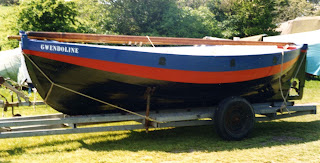
Jimmy’s partner for many years was Jimmy Scotter. Jimmy Scotter’s son Arthur started his fishing career with Jimmy Dumble.
 |
| Jimmy Dumble (centre) & Arthur Scotter (right) |
Jimmy always seemed contented with what life threw at him.

Jimmy died in 1958 aged 78. I was honoured to act as a pall-bearer at his funeral, along with his former lifeboat crew members Henry ‘Downtide’ West, Teddy ‘Lux’ Craske and Arthur Scotter.
